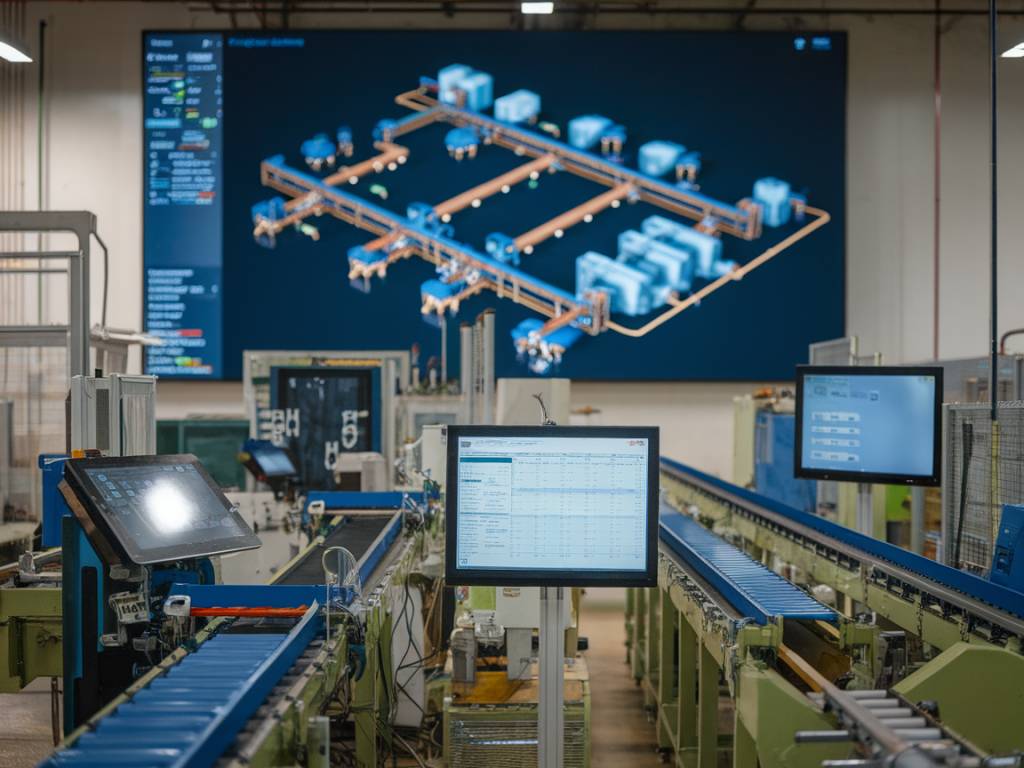In the evolving domain of supply chain management, the integration of advanced technologies continues to redefine efficiency and productivity. One such transformative technology is the concept of « Digital Twins ». Digital twins have emerged as a formidable tool in enhancing supply chain operations, providing unparalleled visibility, predictive analytics, and actionable insights.
What are Digital Twins?
Digital twins are virtual replicas of physical assets, processes, and systems. They bridge the gap between the physical and digital worlds, enabling real-time monitoring, simulation, and optimization. Originating from the aerospace and manufacturing sectors, digital twins have gradually permeated various industries, including supply chain management.
By creating digital replicas of physical entities, supply chain managers can monitor the performance, predict potential disruptions, and optimize processes throughout the supply chain. The key to their effectiveness lies in their ability to integrate data from multiple sources, including sensors, IoT devices, and enterprise systems.
How Digital Twins Enhance Supply Chain Visibility
One of the primary benefits of digital twins in supply chain operations is enhanced visibility. Traditional supply chain management often grapples with fragmented data and siloed processes, leading to inefficiencies and delayed decision-making. Digital twins address this by providing a unified, real-time view of the entire supply chain.
Through continuous data integration, digital twins offer insights into inventory levels, shipment statuses, and production processes across the supply chain. This visibility enables supply chain managers to identify bottlenecks, optimize resource allocation, and streamline operations.
Predictive Maintenance and Risk Management
Digital twins play a crucial role in predictive maintenance and risk management within the supply chain. By utilizing real-time data and advanced analytics, digital twins can anticipate equipment failures, disruptions, and other risks before they occur.
Predictive maintenance involves monitoring the condition of equipment and machinery through their digital twins. Algorithms analyze the data to detect patterns indicating potential failures, allowing for timely interventions. This proactive approach reduces downtime, minimizes maintenance costs, and extends the lifespan of assets.
In terms of risk management, digital twins enable supply chain managers to simulate various scenarios and evaluate their impact. Whether it’s a natural disaster, labor strike, or supplier disruption, digital twins provide a platform for assessing risks and devising contingency plans.
Enhancing Collaboration Across Supply Chain Stakeholders
Effective supply chain management requires seamless collaboration among various stakeholders, including suppliers, manufacturers, distributors, and retailers. Digital twins facilitate this by providing a shared, real-time platform that all stakeholders can access.
With digital twins, stakeholders gain a holistic view of the supply chain, enabling better coordination and communication. This collaborative environment fosters transparency, reduces misunderstandings, and ensures that all parties are aligned towards common goals.
Optimizing Supply Chain Processes with Digital Twins
Optimization is another significant advantage of implementing digital twins in supply chain operations. By simulating different scenarios, digital twins help identify the most efficient routes, production schedules, and inventory strategies.
Key areas where digital twins drive optimization include:
- Inventory Management: Digital twins provide real-time inventory tracking, helping to prevent stockouts and overstock situations. This ensures optimal stock levels and reduces carrying costs.
- Logistics and Transportation: By simulating various transportation routes and methods, digital twins enable the selection of the most cost-effective and timely delivery options.
- Production Planning: Digital twins help optimize production schedules by simulating different production scenarios, balancing demand and capacity, and minimizing lead times.
- Supply Chain Resilience: Digital twins enable the evaluation of supply chain resilience by simulating disruptions and evaluating the effectiveness of recovery strategies.
Implementing Digital Twins in Supply Chains
While the benefits of digital twins in supply chain operations are evident, successful implementation requires a strategic approach. Here are some key steps to consider:
- Data Integration: Integrate data from various sources, including sensors, IoT devices, ERP systems, and external suppliers. This data forms the foundation of the digital twin and ensures accurate, real-time insights.
- Algorithms and Analytics: Develop algorithms and analytics tools to process the data and generate actionable insights. AI and machine learning play a crucial role in making sense of the vast amounts of data collected.
- Scalability: Ensure that the digital twin solution can scale with your supply chain operations. As your supply chain grows and evolves, the digital twin should be able to handle increased data volumes and complexity.
- Stakeholder Engagement: Involve all relevant stakeholders in the implementation process. Stakeholders should understand the benefits of digital twins and how to use them effectively.
- Continuous Improvement: Digital twins are not a one-time implementation. Continuously monitor and refine the digital twin model to adapt to changing conditions and improve accuracy.
Challenges and Considerations
Despite the numerous benefits, implementing digital twins in supply chain operations comes with its own set of challenges. Organizations must consider factors such as:
- Data Quality: The accuracy and effectiveness of a digital twin depend heavily on the quality of the data it receives. Poor data quality can lead to incorrect predictions and suboptimal decisions.
- Integration Complexity: Integrating data from multiple sources and systems can be complex and requires robust IT infrastructure and expertise.
- Cost: Developing and maintaining digital twins can be costly, especially for small and medium-sized enterprises. Cost-benefit analysis is crucial before implementation.
- Security Concerns: Digital twins involve the handling of vast amounts of data, raising concerns about data security and privacy. Robust cybersecurity measures are essential to protect sensitive information.
- Change Management: Implementing digital twins often requires a cultural shift within the organization. Training and change management strategies are essential to ensure successful adoption.
Despite these challenges, the potential benefits of digital twins in enhancing supply chain operations are too significant to ignore. By providing real-time visibility, predictive analytics, and optimization capabilities, digital twins represent a powerful tool for modern supply chains.
As supply chain complexity continues to grow, the adoption of digital twins is likely to become increasingly widespread. Organizations that leverage digital twins effectively will be well-positioned to achieve greater efficiency, resilience, and competitive advantage in their supply chain operations.
